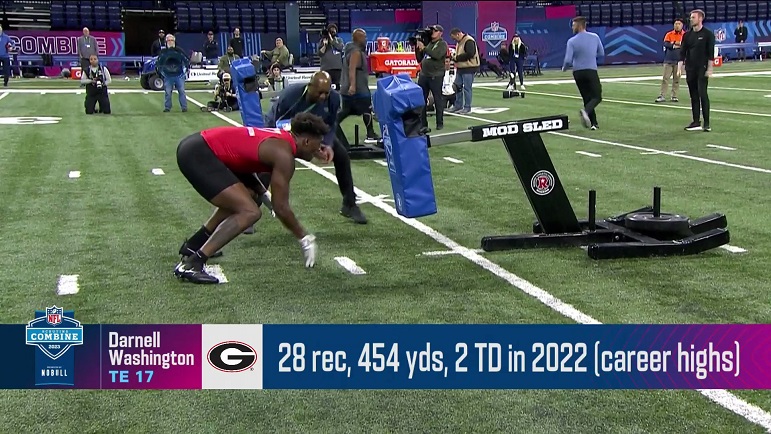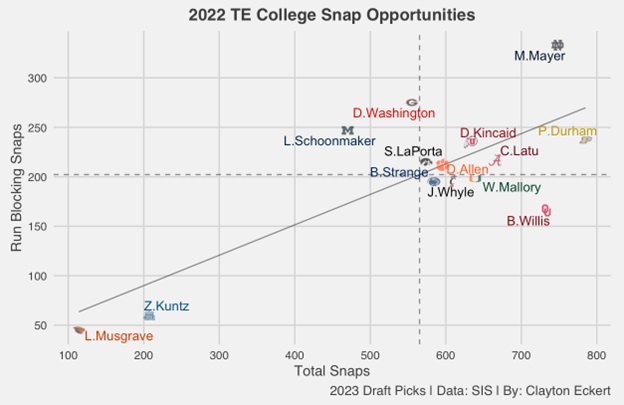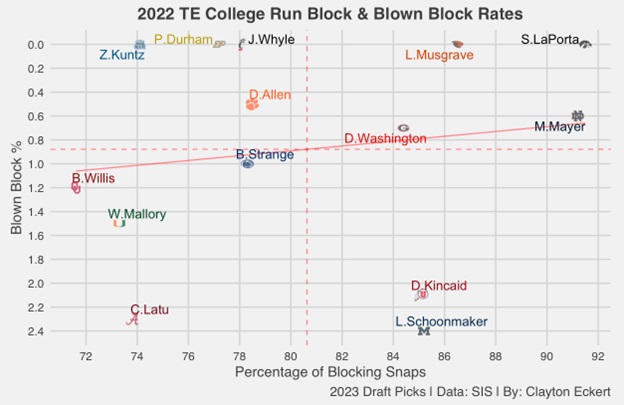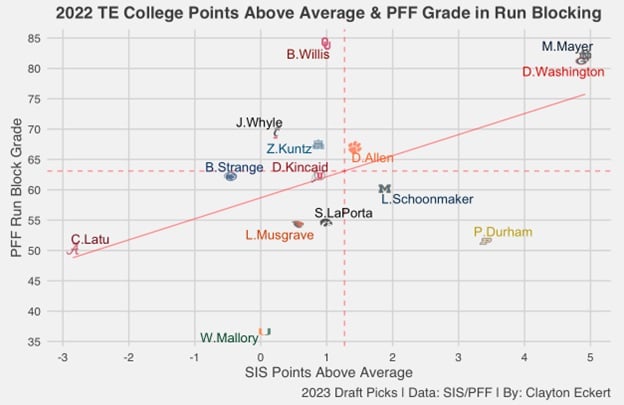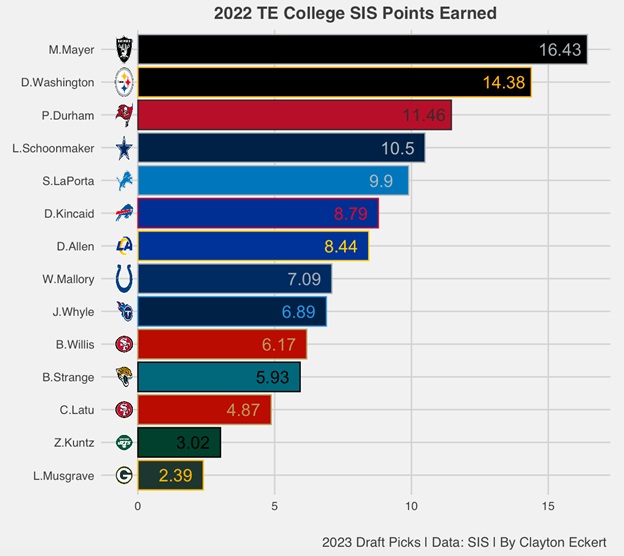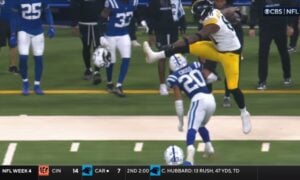Continuing the series, I wanted to look at and provide data for the tight end position, where the Pittsburgh Steelers were able to select Darnell Washington 93rd overall in the third round of the 2023 NFL Draft. Today’s goal is to view how the players at the position fared as run blockers, where Washington is projected to make the biggest impact right away. The data in this study looks at final college seasons in 2022, focusing on the players who heard their names called in the draft, and one player was excluded due to Sports Info Solutions (SIS) not tracking smaller schools. The goal is to see how Washington stacked up among his peers.
First, let’s look at total snaps along with their run-blocking snaps to get a gauge of the players’ opportunities, and the quantity value they provided their teams in the run game:
Here we can see Washington was just below the mean out of 14 qualifying tight ends in total snaps in the regular season (555) which ranked 11th, though he encouragingly played in every game. He does have past injuries that seemingly made him available to Pittsburgh later than anticipated, but thanks to our own Melanie Friedlander’s excellent entrance physical research, there is optimism that they will not have long-term effects. Washington was highly utilized in the run game last season, ranking second with 275 snaps, which was 49.5% of his opportunities (second), and well above the trendline. This will seemingly be the way Pittsburgh will employ him out of the gate, a big-bodied tight end who takes pride in his run blocking and coining his “sixth offensive lineman” nickname. Very important context as we dive further, considering his NFL role will likely be similar.
Next, let’s start to look at quality aspects of play, with blown block rates (percentage of run blocking plays where the blocker does not successfully block the defender they attempted to engage with, giving the defender an opportunity to negatively affect the play), along with the percentage of the tight ends blocking snaps that came in the run game:
Washington lands above the mean in both data points, with 84.4% of his blocking snaps coming in the run game (sixth). This allows me to side-note his utilization as a pass blocker (15.6%), often getting on the move with tackle Broderick Jones at Georgia, whom the Steelers were also lucky enough to select in April, leading the way in the short pass game that I can’t wait to see in action. Washington’s 0.7 blown block rate in the run game ranked eighth, charted for two such plays, so not concerning considering his second-most run snaps, but something to factor in and keep an eye on against the talent jump in the NFL.
Now let’s zoom in with SIS’s points above average metric (The total of a player’s EPA responsibility while blocking using the Total Points system that distributes credit among all players on the field for a given play. For blockers, this includes accounting for blown blocks, yards before contact on running plays, and performance given the defenders in the box.) along with PFF run defense grades:
With a more macro view, we get a greater sense of Washington’s run-blocking value on the top right of the chart. He ranked a close second in points above the average player in the run game and third in PFF run block grade. Very encouraging results among the position as a run blocker, which will hopefully aid to the huge focus the Steelers put on this aspect of play this offseason through free agency and the draft along the offensive line and with Washington.
To wrap up, let’s look at a more total blocking view with SIS’s points earned metric (The total of a player’s EPA responsibility while blocking using the Total Points system that distributes credit among all players on the field for a given play. Totals are scaled up to map to the average points scored or allowed on a team level, with the player’s snap count determining how much to adjust. For blockers, this includes accounting for blown blocks, yards before contact on running plays, and performance given the defenders in the box.) and which NFL teams made their dreams a reality by selecting them:
Washington lands second in these terms as well, providing great value for Georgia last season as a run blocker. He also matched that ranking in run blocking snaps and points above the average level player, along with a strong third rank in PFF run defense grade. He was also above average in percentage of blocks and blown block rate in the run game. There is more optimism than others regarding his injury history, which will hopefully come to fruition. Washington’s only below-average result was slightly landing below the mean in total snaps, but this is not concerning considering it matches the probable role Pittsburgh envisions for him, and hopefully, this makes his transition to the NFL more seamless. His size will be another factor that likely aids his blocking in the league, with benefits as a receiver as well, which I will look at soon. One thing’s for sure, I’m very excited to see how he fares in the black and gold.
Throughout the rest of the offseason, I will dive deeper into the data as we continue to learn about the newest Pittsburgh Steelers. How do you think Darnell Washington will fare his rookie year? Thanks for reading and let me know your thoughts in the comments.

